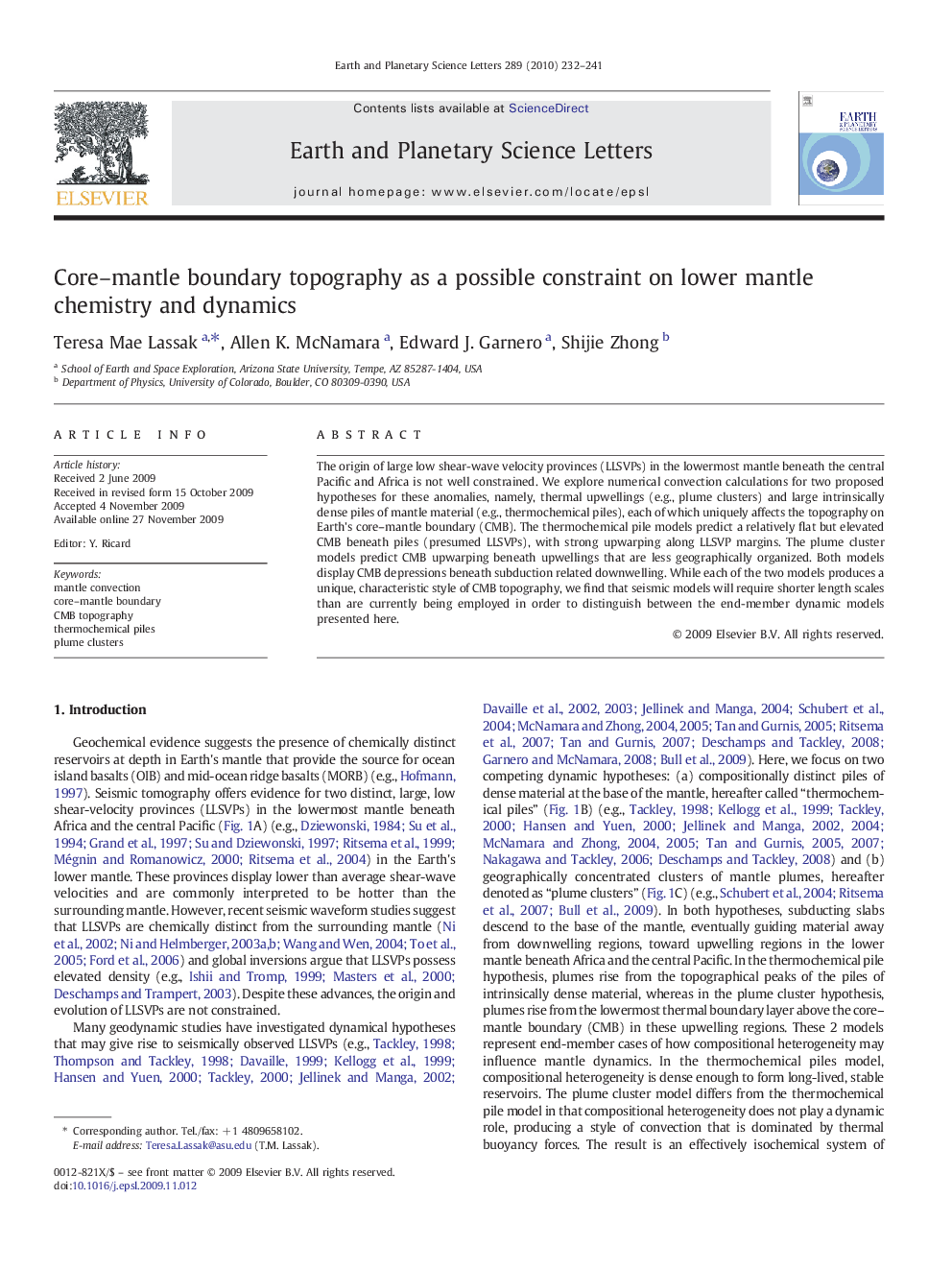| Article ID | Journal | Published Year | Pages | File Type |
|---|---|---|---|---|
| 4678853 | Earth and Planetary Science Letters | 2010 | 10 Pages |
The origin of large low shear-wave velocity provinces (LLSVPs) in the lowermost mantle beneath the central Pacific and Africa is not well constrained. We explore numerical convection calculations for two proposed hypotheses for these anomalies, namely, thermal upwellings (e.g., plume clusters) and large intrinsically dense piles of mantle material (e.g., thermochemical piles), each of which uniquely affects the topography on Earth's core–mantle boundary (CMB). The thermochemical pile models predict a relatively flat but elevated CMB beneath piles (presumed LLSVPs), with strong upwarping along LLSVP margins. The plume cluster models predict CMB upwarping beneath upwellings that are less geographically organized. Both models display CMB depressions beneath subduction related downwelling. While each of the two models produces a unique, characteristic style of CMB topography, we find that seismic models will require shorter length scales than are currently being employed in order to distinguish between the end-member dynamic models presented here.
